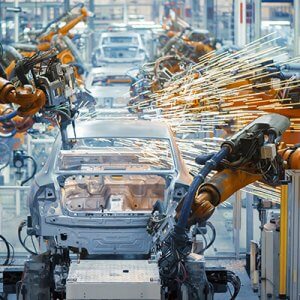From Drivetrain to Blockchain: transparency in the automotive supply chain
 Blockchain is increasingly becoming more widespread in its use outside of just the financial services industry.
Blockchain is increasingly becoming more widespread in its use outside of just the financial services industry.
Providing the capability to track raw materials through their lifecycle of being made into components and then delivered to the automobile assembly line, is incredibly powerful. Guaranteeing the authenticity of those parts and the working credentials of the companies that made them is invaluable, e.g. working conditions, human rights, environmental protection, safety, business ethics etc. This is made possible by utilising the power of blockchain’s distributed electronic ledger capability.
Adoption of blockchain technology is still in its relative infancy. Having now spread wider than its original use as a public transaction ledger for bitcoin, the benefits are being realised increasingly by more industries outside of financial services, including automotive.
Blockchain is increasingly becoming more widespread in its use outside of just the financial services industry. Read how Mercedes-Benz in partnership with contract management software provider Icertis is utilising blockchain for improving transparency in its supply chain.
Having been involved in providing supply chain solutions for ~30 years, SEEBURGER expect the benefits of blockchain to gradually (at first) work their way into more mainstream EDI / E-Invoicing solutions, particularly with regards to smart contracts that are able to create invoices that pay themselves when a shipment arrives. This will be accomplished by embracing API’s (Application Programming Interfaces) to utilise the underlying power of distributed electronic ledger technology such as blockchain.
Blockchain is not just a hype technology, it is starting to deliver real-world benefits outside of the financial services market, particularly in the areas of supply chain in the automotive industry. Read more about SEEBURGER’s vision of blockchain here or contact us directly.
Source: https://blog.seeburger.com/from-drivetrain-to-blockchain-transparency-in-the-automotive-supply-chain/
 industry-trend6.com
industry-trend6.com
